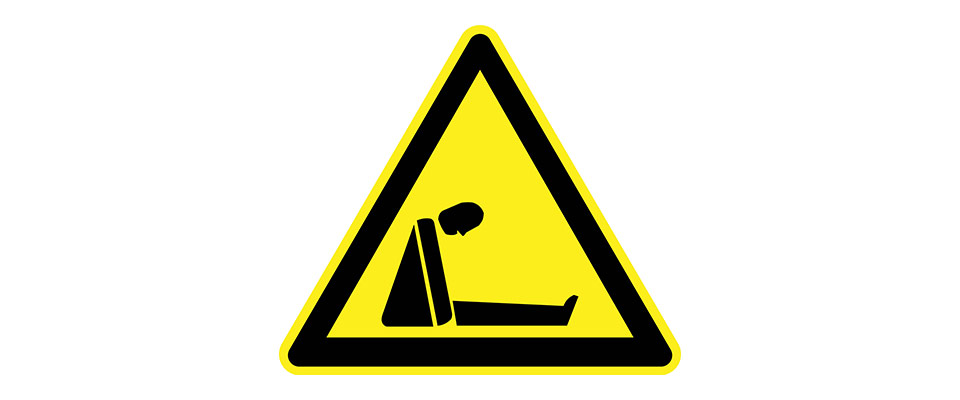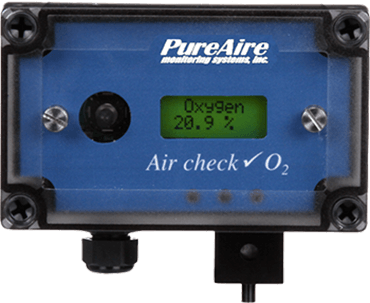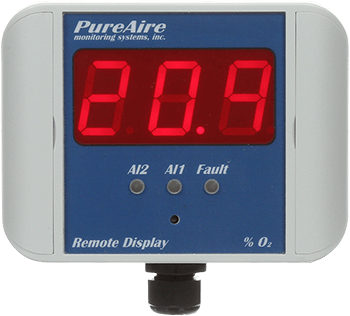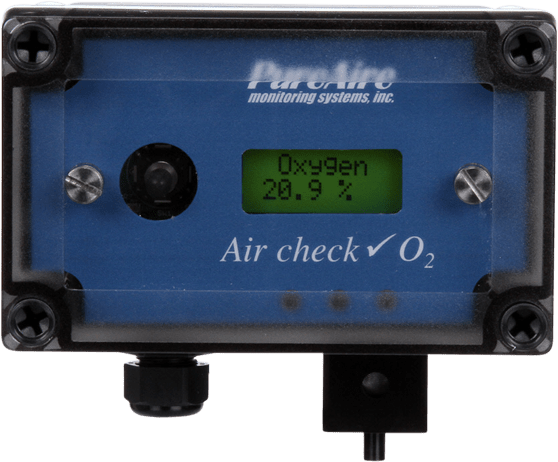Protecting Against Oxygen Deficiency Risk

What is Oxygen Deficiency?
The air we breathe is made up of 78% nitrogen, 21% oxygen, and trace amounts of other gases such as carbon dioxide, neon, and hydrogen. The Occupational Safety and Health Administration (OSHA) defines an environment in which oxygen levels fall below 19.5% as an oxygen-deficient atmosphere, which should be treated as immediately dangerous to health or life.
How is Oxygen Deficiency Dangerous?
Oxygen deficiency is often called a silent killer, because there are no warning signs when oxygen concentrations drop to an unsafe level.
Inhaling just a few breaths of oxygen-deficient air can have immediate negative effects, which may include impaired coordination, accelerated respiration, elevated heart rate, nausea, vomiting, loss of consciousness, convulsions, or even suffocation due to a lack of sufficient oxygen.
Where can Oxygen Deficiency Occur?
Oxygen deficiency can occur in any location where compressed oxygen-depleting gases are used, stored, or may accumulate.
Industries that commonly use these types of gases include, but are not limited to, laboratories, MRI, food and beverage, cryogenic facilities, aerospace, pharmaceutical, research and development, alternative fuel, waste management, semiconductor, additive manufacturing, and the oil and gas sectors.
Manufacturers and other organizations utilizing compressed, oxygen-depleting gases in their operations need to successfully navigate complex working environments in which high concentrations of such gases may be critical to production procedures, but where the risks of oxygen deficiency may pose a potential safety hazard for their employees.
Fortunately, by utilizing a top-quality oxygen deficiency monitor, facility managers can maintain stringent processing requirements, as well as protect the health and safety of their personnel.
What is an Oxygen Deficiency Monitor?

An oxygen deficiency monitor is a device that measures oxygen levels in a particular area. By continuously tracking oxygen levels, oxygen deficiency monitors are designed to detect oxygen-depleting gas leaks before employee health is jeopardized.
A number of oxygen-depleting gases, including nitrogen, helium, carbon dioxide, and argon, among others, are both odorless and colorless. As such, unless they are using a reliable oxygen deficiency monitor, personnel working with such gases would likely be unable to detect a gas leak should one occur in a gas cylinder or line, and they could likewise be unaware that they were breathing oxygen-deficient air.
PureAire Oxygen Deficiency Monitors
 PureAire Monitoring Systems’ line of Oxygen Deficiency Monitors offers thorough air monitoring, with no time-consuming maintenance or calibration required. An easy-to-read screen displays current oxygen levels for at-a-glance reading by employees, who derive peace of mind from the Monitor’s presence and reliable performance.
PureAire Monitoring Systems’ line of Oxygen Deficiency Monitors offers thorough air monitoring, with no time-consuming maintenance or calibration required. An easy-to-read screen displays current oxygen levels for at-a-glance reading by employees, who derive peace of mind from the Monitor’s presence and reliable performance.
Our Monitor continuously tracks oxygen levels and, in the event of a gas leak and a drop in oxygen to an OSHA action level, will set off an alarm, complete with horns and flashing lights, alerting employees to evacuate the affected area.
The Monitor will remain accurate at temperatures as low as -40C. PureAire’s durable, non-depleting, long-life zirconium oxide sensor will last for 10+ years in a normal environment without needing to be replaced.
To reduce risk to personnel, PureAire’s optional Remote Digital Display may be placed well outside of high risk rooms (up to 250 feet from the Monitor itself), where it will safely exhibit oxygen levels inside the room.
Recent Posts
Надежда Гришаева И Anvil История Успеха И Расширения Возможностей
Nadezhda Grishaeva Exudes Happiness And Vitality While Leading A Vibrant Gathering To Commemorate Anvil’S Impressive Three Years Of Achievements In The Business Sector
Talk Dirty AI: Everything for Spicy AI Sex Chats
Talk Dirty AI: Start Chatting For Free On GirlfriendGPT
Why Are My Lymph Nodes Swollen?
Slottica Review 2024 Bonus, Free Spins & Games


